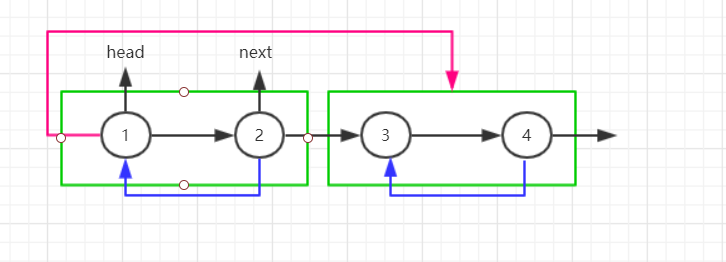Given a linked list, reverse the nodes of a linked list k at a time and return its modified list.
k is a positive integer and is less than or equal to the length of the linked list. If the number of nodes is not a multiple of k then left-out nodes in the end should remain as it is.
Example:
Given this linked list: 1->2->3->4->5
For k = 2, you should return: 2->1->4->3->5
For k = 3, you should return: 3->2->1->4->5
Note:
Only constant extra memory is allowed.
You may not alter the values in the list’s nodes, only nodes itself may be changed.
来源:力扣(LeetCode)
链接:https://leetcode-cn.com/problems/reverse-nodes-in-k-group
著作权归领扣网络所有。商业转载请联系官方授权,非商业转载请注明出处。
C++:1
2
3
4
5
6
7
8
9
10
11
12
13
14
15
16
17
18
19
20
21
22
23
24
25
26
27
28
29
30
31
32
33
34
35
36
37
38
39
40/**
* Definition for singly-linked list.
* struct ListNode {
* int val;
* ListNode *next;
* ListNode(int x) : val(x), next(NULL) {}
* };
*/
class Solution {
public:
ListNode* reverseKGroup(ListNode* head, int k) {
ListNode* cur = head;
return reverse(head, cur, k);
}
ListNode* reverse(ListNode* head, ListNode* cur, int k){
ListNode* tmp = cur;
int count = 0;
while(tmp){
tmp = tmp -> next;
count++;
}
if(count < k) return head;
ListNode* next = NULL;
ListNode* pre = NULL;
int n = k;
while(cur && n-- > 0){
next = cur -> next;
cur -> next = pre;
pre = cur;
cur = next;
}
head -> next = reverse(cur, cur, k);
return pre;
}
};
